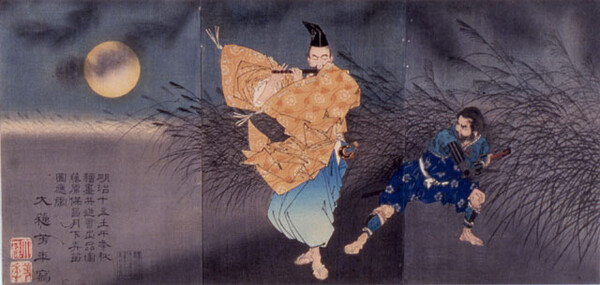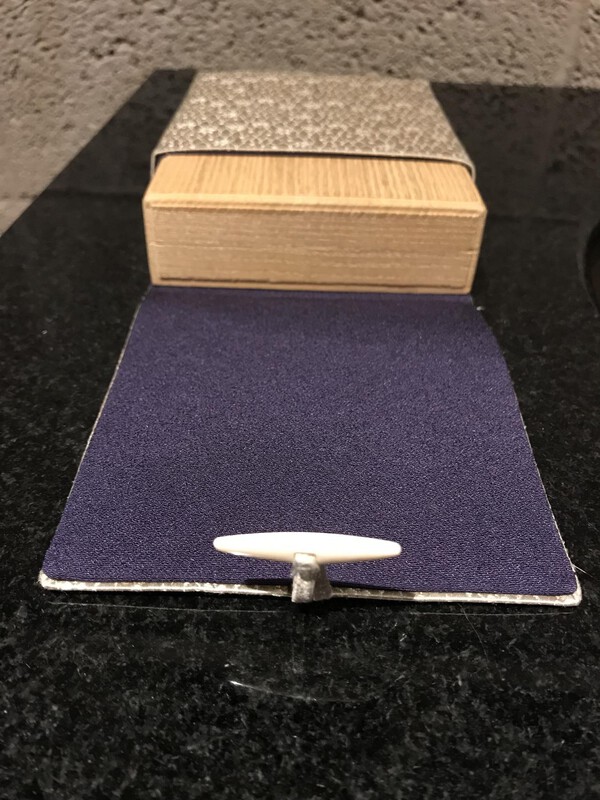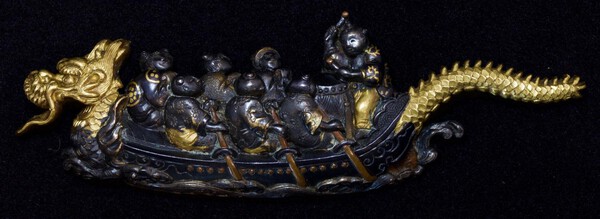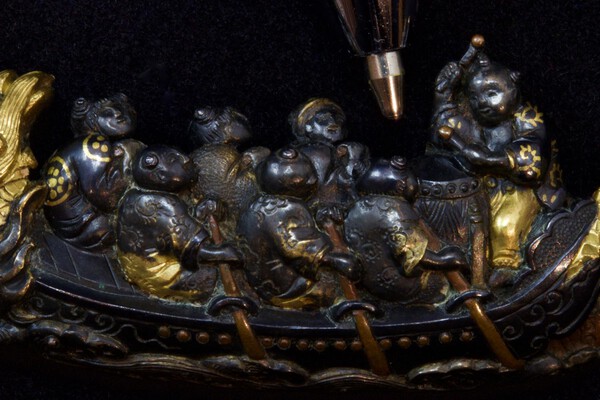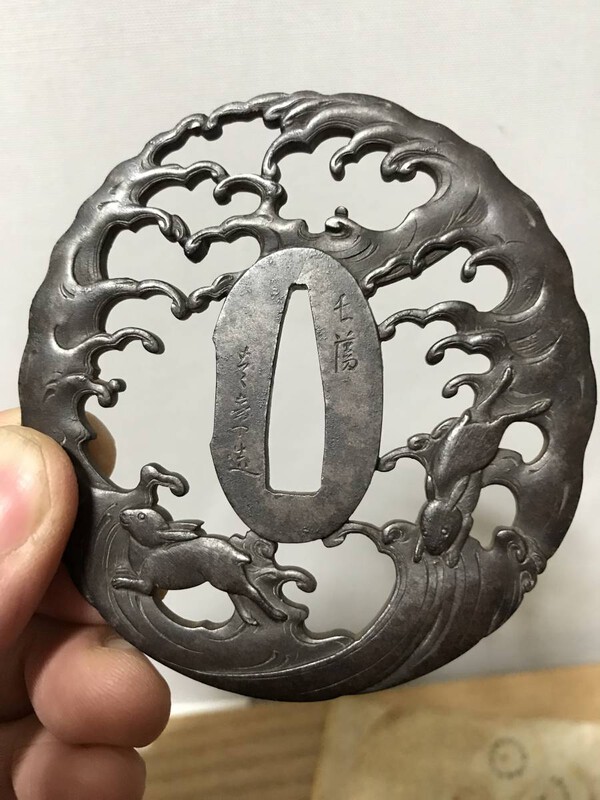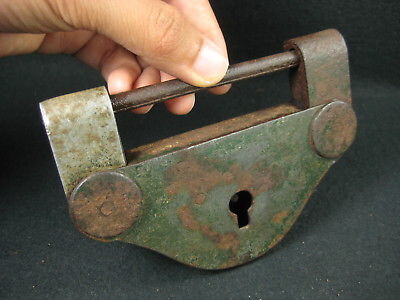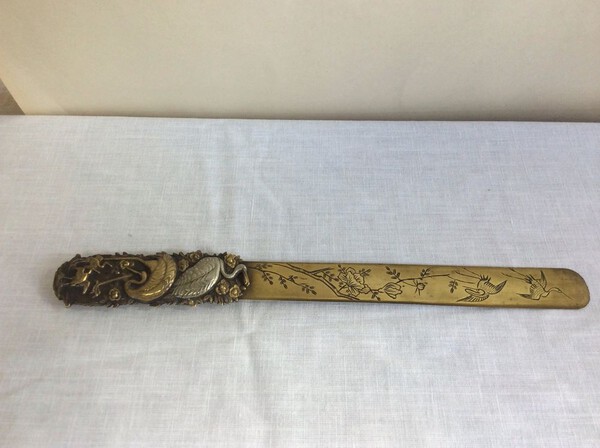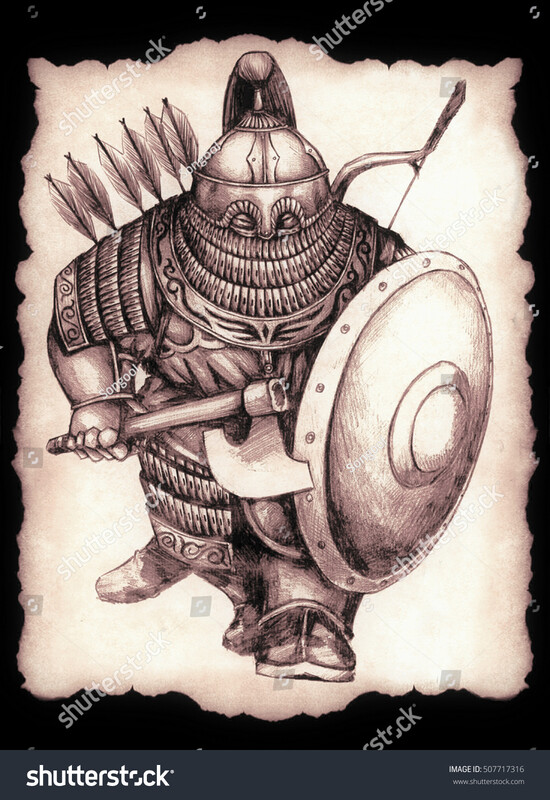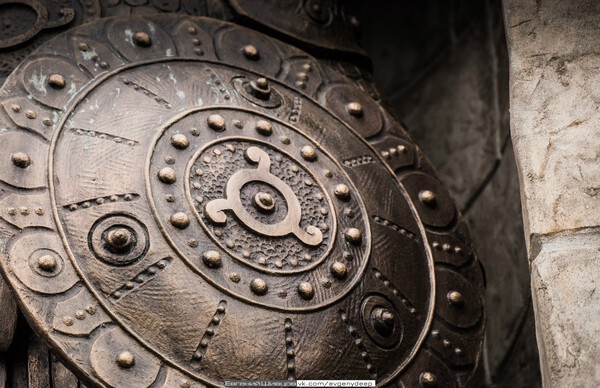-
Posts
858 -
Joined
-
Last visited
-
Days Won
7
Content Type
Profiles
Forums
Events
Store
Downloads
Gallery
Everything posted by Tanto54
-
Hi Steven, Isn't that a centipede instead of a crab? The centipede is Bishamon's companion.
-
Dear Mark, They are assembly marks and the symbols on the nakago are augmented Roman Numerals where X = 0. Therefore it reads X V I V X or 0650.
-
Hi Grey, Yes there is a story about animals wanting to perform for the Moon. The Inoshishi does Sumo and the Moon really likes it because of his sincere and humble attitude. Therefore, it may be a symbol for the Moon Festival and Sumo. It might also refer to the gambling game Hanafuda - where the "hand" with the Boar (July) is right next to the "hand" with the Moon (August). Could also be a reference to Marishiten (the Goddess of Martial Arts which some Samurai worshiped) who rode on the back of a Inoshishi and held a Moon (along with other items...) in one of her 8 hands. Seeing the other fittings could help identify the theme more precisely. MARISHITEN ^ ^Ij ^ ^. Deity of martial aspect, From the Internet: あらすじ 山に住む動物達が、夜の暮らしを見守って下さるお月さまに感謝の意を示そうと、色々な芸を行ってお月さまに観て貰おうと言う事になりました。 動物達が銘々、自分の得意な芸の話をしている中、猪だけは「俺にはお月さまに観て頂く芸がない」としょんぼりしています。それを観た動物達は「お月さまに怒られても知らないぞ」「芸なしは仲間にしないよ、早く帰りな」と猪をのけ者にしました。 猪は住処に戻って、弟の猪に事の次第を話し「お月さまに申し訳ない」と泣きました。すると弟の猪は「兄貴、俺達にだってできる事があるさ」と言いました。 さて十五夜の晩、動物達はお月さまに観て頂く為に色々な芸をしました。兎は杵つき踊り、狸は腹つづみ、狐は狐火を操る芸を、猿はそれらの芸をそっくり猿真似して見せました。 でもお月さまは少しも喜んだ素振りを見せませんでした。動物達は「どうすればお月さまは喜んでくれるんだろう」とすっかりしょげてしまいました。 ところで、その反対側の山では、猪兄弟がお月さまに向かってこう言いました。「俺達、何も芸がないけど、せめて力いっぱい相撲を取ってお見せしますので、どうか観て下さい」 そして、猪兄弟は山の頂の台地を土俵に見立て、力いっぱい相撲を取りました。その一生懸命さにお月さまは熱心になって観ておりましたが、やがて「わっはっは、のこったのこった!」と大きな声で笑いました。 これを観た他の動物達は面白くありません。「なんで相撲ごときが面白いのか」「下品なばかりでちっとも楽しくないじゃないか」と文句を言いました。するとお月さまは動物達に向かって「自分の自慢ばかりして他人を貶めてはならん!例え芸がなくとも一生懸命相撲をとって見せる、この姿勢こそが大事なのだ」と言って叱りました。 それからも、十五夜の夜には猪兄弟による奉納相撲が、山の台地で度々行われたと言う事です。
-
Nice!!!
-
Thanks Alan, I sent him a message and will let you guys know what I find out.
-
Dear John, My pleasure. Yes, the "pile of gold" on your menuki is actually a hat (for example see eboshi and kanmuri) and is probably sokutai (the Japanese equivalent of white tie and tails for a royal audience). This is not the exact hat (hats and clothes differ depending upon the rank of the Samurai) but you will see the resemblance.
-
Dear John, While I imagine that you are more interested in the maker or school, I think that the motif is probably the story of Fujiwara no Yasumasa (from the Tales of Uji - Uji Shui Monogatari). Yasumasa is walking under the moonlight in his court clothes and a bandit is following him intending to steal his hat and clothes. It turns out that the thief is actually his brother, Kidomaru. As his brother prepares to attack, Yasumasa starts playing his flute and the beauty of the music stops Kidomaru in his tracks. This story is sometimes alluded to with the susuki (grass), moon and court hat symbols.
-
Dear Curran and Richard, Great ideas - Thanks!
-
Does anyone know where to get the very high-end tsuba boxes with silk cover bags like the one pictured? I’ve searched the Board and have found many posts on where to get other boxes or how to make them, but I can’t find this particular type anywhere. FYI (and to collect it all in one place) - Here’s are few of the others that I found from other posts here on NMB (I have not used, so I cannot personally recommend any of these... and sorry if I missed anyone): NAMIKAWA HEIBEI www.namikawa-ltd.com/product-list/20 http://sanmei.com/contents/en-us/d23_01.html http://hakoyoshi.com/company.html http://nihonto.us/BOXES.htm Tozando http://www.tokensibata.co.jp/acc/acc1.html Here’s info from a post on a custom box insert maker in Japan: Mr. Yoshiaki Iimura K.K.Token Bijutsu Kogeisha ITABASHI 4-10-2, ITABASHI-KU, TOKYO Postcode 173-0004 Japan Email: katana-iimura@apost.plala.or.jp Website: http://www16.plala.o... ... glish.html Here’s Ford’s Instructions for making custom box inserts: http://www.followingtheironbrush.org/viewtopic.php?f=70&t=736&hilit=fitted+tsuba+box Here’s some similar instructions for making your own custom inserts posted by Guido (from Martin Hellmann) http://www.militaria.co.za/nmb/topic/18459-anyone-in-the-us-making-custom-made-fittings-boxes/?hl=%2Btsuba+%2Bboxes&do=findComment&comment=190162 Other places from the web: http://www.yamatobudogu.com/category_s/277.htm http://ryujinswords.com/pawlonia.htm http://www.nuovashobudo.it/catalog/index.php?cPath=1_12
-
Dear Florian, My server reports that your picture hosting site is corrupt and is loading viruses (it caused my computer to crash). You should consider using another site...
-
Congratulations Valery!!!
-
Congratulations on getting it finished Teufelshunde. When you have time, I'd be interested to hear about which craftsmen worked on this project.
-
Here's a similar thread from 2017 with info about an almost identical tsuba to the one that Mark found - http://www.militaria.co.za/nmb/topic/23000-help-identifying-theme-please/ The composition is so similar that they must be copying a published design (FWIW - I'm not saying that these appeal to me...)
-
Dear Chris, In 45 years of looking at lots of tosogu, I've only seen two with sharks that I remember. One was a large set of Menuki (about 5 inches long) and the other was on a marine themed tanto. In general, sharks do not have a good reputation in early Japanese art - could be from inabano shiro usagi story or other early Japanese myths (where the shark mistreated other animals). I have seen about 40-50 tosogu with whales (fairly rare and could be confused with a shark). As you may know, shark skin is occasionally used for saya (lacquered and sanded down showing as tiny triangles) and very rarely used as "same" under the tsuka-maki or ito wrap (instead of rayskin). Regards, George
-
Thanks Guys (Frank & Chris) - I know its a long shot to find a good match for this Dragon Boat, but a few years ago I found THE missing Kashira for a Fuchi that I had been holding for more than 30 years (exact match - must have been the original set).
-
Looking for a match for this Dragon Boat Menuki. Note the fine detail - literally hundreds of inlays and the faces are about the size of a pen tip...)
-
John? Isn't this a cheap, repro fake?
-

What Am I Looking At? Chrysanthemum Stamp
Tanto54 replied to lanceoa's topic in Translation Assistance
Dear Lance, It looks like a good blade - congratulations. Please take a look at the care and handling instructions on this website. Touching the blade with your bare hands or using any kind of abrasive or many common "cleaners" can ruin your sword. Some of the care instructions from this website are reproduced below: The starting point to preserving a blade is to pick up some light machine oil, the type sold for sewing machines, or some traditional oil for Japanese blades which is called choji oil. This refers to clove oil, but is actually a light machine oil mixed with a tiny bit of clove oil just for the pleasant traditional scent. Do not use pure pharmaceutical clove oil. Many other oils such as gun oils and vegetable oil can gum up, leave stains or have other adverse effects over time. A few drops on a clean and soft cloth, lightly wiped over the blade when it has been handled should do the trick. In climates that are less humid, cleaning does not have to be done very frequently. Less is more when it comes to Nihonto. Uchiko powder and commercial sword cleaning balls containing powdered abrasive should generally be reserved for blades heavily out of polish, and even then very sparingly. They can be used occasionally on Nihonto to remove old oil, but bear in mind that they are abrasive and will dull a new polish over time. Removal of old oil can easily be done with pure alcohol, otherwise known as dehydrated alcohol or waterless ethanol. This is 99.5% pure alcohol. Be careful when cleaning the area close to the tang - try to avoid moving the tissue up from the nakago - the tissue might pick up rust particles from the nakago (tang) and scratch the blade. Move the tissue in one direction - from the tang to the tip. Never ever move your hand up and down - you could cut yourself badly some day (and blood will stain a blade.) Scented or otherwise hampered tissue paper is be avoided. Normal tissue is fine and a lot easier to get a hold of. The best cloth to use is micro fiber cloth, sold for photographic lenses. Microdear is known as the best of these brands and can be found online. These can be washed in water when they get too dirty. -
Dear Curran, Very nice and excellent price - these should go very quickly.
-
Comment withdrawn
-
-
Not Luis, but I think he is referring to Geese...
-
Not positive, but it appears that the nakago (tang) has been shaved more on one side (signature side) than the other implying an altered signature ((looking at the nakago -tang- from the mune -backside- the signed side appears to have been shaved down, which could have been done to remove a different signature). P.S. Very good for a first Japanese blade.
-
Dear Grev, While I'm not a Japanese lock expert, I have seen hundreds of them over the years. I've never seen a pre-Meji Japanese lock with this kind of shackle. Instead, they are usually of the shape shown below (therefore, I do not think that this tsuba represents a lock).
-
Dear Michael, Thanks for the better pictures. I think that a page turner is a good guess especially because of the two books depicted on the back. However, Japanese page turners (see photo below) almost always have a distinctive "handle" that is a different size and shape than the "blade" of the page turner. Therefore, I think that if the Tsubashi wanted to depict a page turner, then he would have shown the handle and blade so the viewer would be able to recognize it immediately (so my guess is that it is not a page turner). As an alternative, it could be a bunchin (paperweight), but I’m just guessing too. How many toes does the Dragon have? Even with the better pictures, it's hard for me to see the toes. Many Japanese artists will follow the convention of three toes for a "Japanese" dragon and four or five toes for a dragon that represents China. As for the other unidentified element on the front (the circular object at the bottom) I have attached a few Mongolian shield pictures for you to compare (but I still do not have much faith in that interpretation either...) What do you think is behind/under the Ikebana? I appears to be a board to me with a mokume (wood grain) surface, but the perspective is very strange (Japanese often didn’t use a true or accurate perspective in their antique art). I can’t tell if it is a wood bench that the Ikebana is setting on or something that is more vertical. Sorry, more questions than answers....





